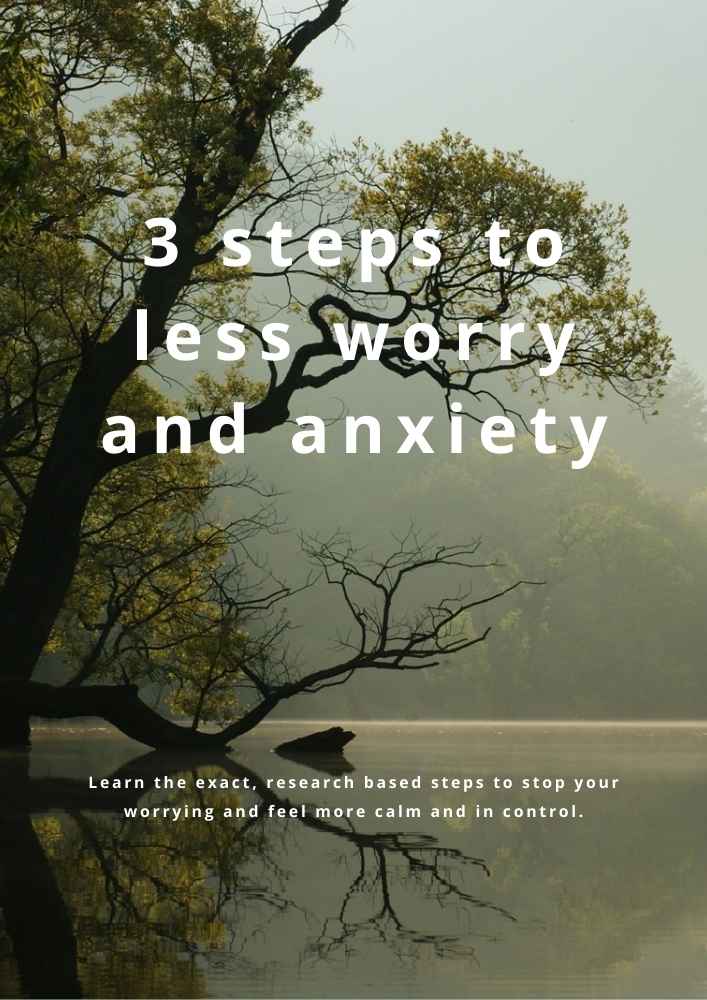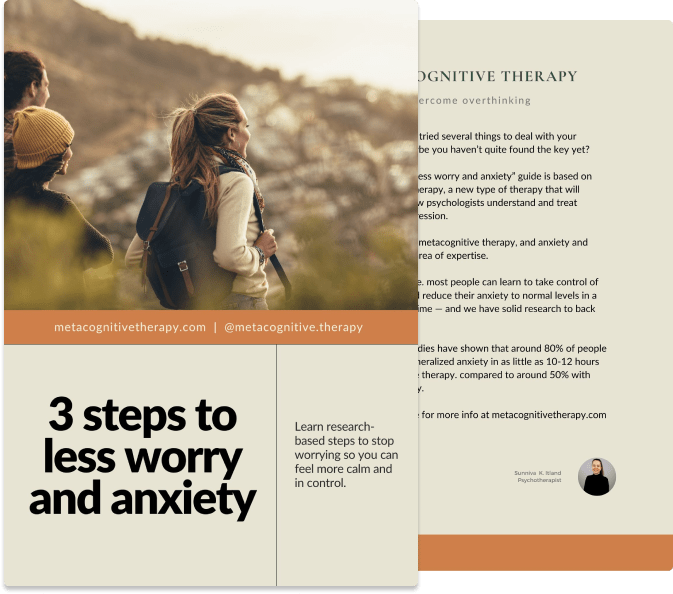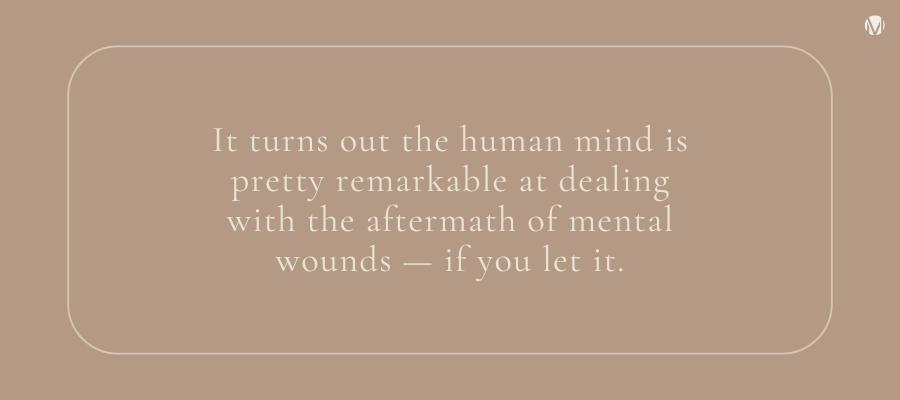Post-traumatic stress disorder: Why do some people develop PTSD?

Download our best tips on reducing anxiety and worrying
Learn three powerful metacognitive therapy steps to stop the worry cycle, reduce anxiety, and feel calmer in everyday life.


If you've been through a traumatic experience, you might struggle with intrusive and unwanted thoughts or images from the event afterwards.
As painful as PTSD feels, it can be really hard to move past it. But research shows that there's hope for approaching it in a new way, so you can move on and find peace. This article dives into a completely new perspective on what causes and maintains anxiety— including PTSD.
'Why can't I move on?'
Imagine two individuals are going through the same traumatic experience. For example, surviving the same hostage situation. Both are shaken up by the events, and the feelings of intense anxiety remain for many days (or even weeks) afterwards. But while person A eventually starts feeling better and is able to pick up their daily routine, person B gets stuck in nightmares, strong symptoms, and painful memories that seem to get worse over time.
Why is that? What makes one person's trajectory so different from the other? Is it because of a difference in the traumatic events they were exposed to? Previous trauma? Genetics? Or maybe a physical difference, such as different hormonal balances?
Contrary to what many believe, the cause is likely none of the above.

Download our best tips on reducing anxiety and worrying
Learn three powerful metacognitive therapy steps to stop the worry cycle, reduce anxiety, and feel calmer in everyday life.
A new perspective
The latest research on mental health points to a different reason why severe anxiety grabs ahold of some, and not others.
This article is rooted in methods developed through recent scientific findings, and goes against many of the beliefs of the traditional school of psychology. This new approach may feel unintuitive, but it's worth exploring.
We now see that for you to overcome your traumas, it's not necessary to process them, or solve them in any deliberate way. In many cases this could be hindering the recovery.
(Spoiler alert: the reason why the pain after a traumatic episode begins to take up more space in your everyday life has a lot to do with the way you relate to your thoughts and symptoms after the event!)

Healing wounds
To understand this, let's explore a metaphor: When you accidentally cut yourself while making a sandwich, you're left with a bleeding wound. Likely, you'll put on a bandaid, and simply go on with your day, trusting your body to take care of the healing even though you don't know exactly how your body does this. You also know that by interfering (scratching and digging into the wound) it will only take longer to heal. It's clear that your body doesn't need your help or attention to take care of the healing.
Interestingly, new research on Metacognitive Therapy shows that this metaphor is also applicable to psychological trauma to a large extent. It turns out the human mind is pretty remarkable at dealing with the aftermath of mental wounds — if you let it. The fascinating thing is that this is also exactly where person A seems to differ from person B. While person A leaves their mental wounds alone, person B spends quite a lot of time picking at their wounds by excessively worrying about the future, and going over the events in their mind, trying to figure out what happened and whether there was anything they could have done differently.
Engagement with thoughts
In general, the amount you engage with your negative thoughts and symptoms is a pretty good indicator of your risk of developing an anxiety disorder. (You can read more about common causes of anxiety here.)
Approaching our psychological traumas the same way we deal with our physical healing can be a much more effective way towards recovery from PTSD.
Read part two of our series on PTSD to learn which strategies help and hinder the recovery process.



